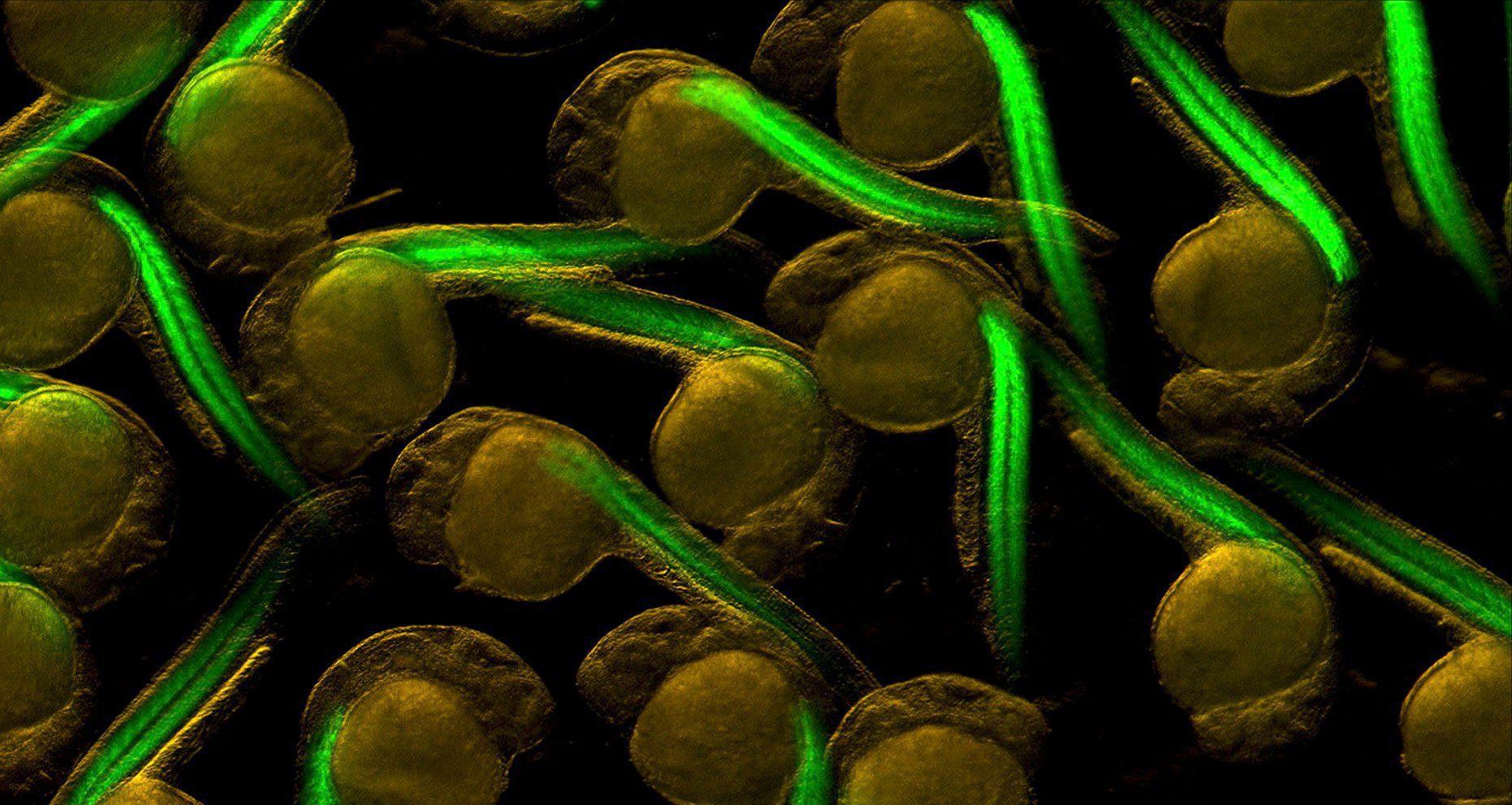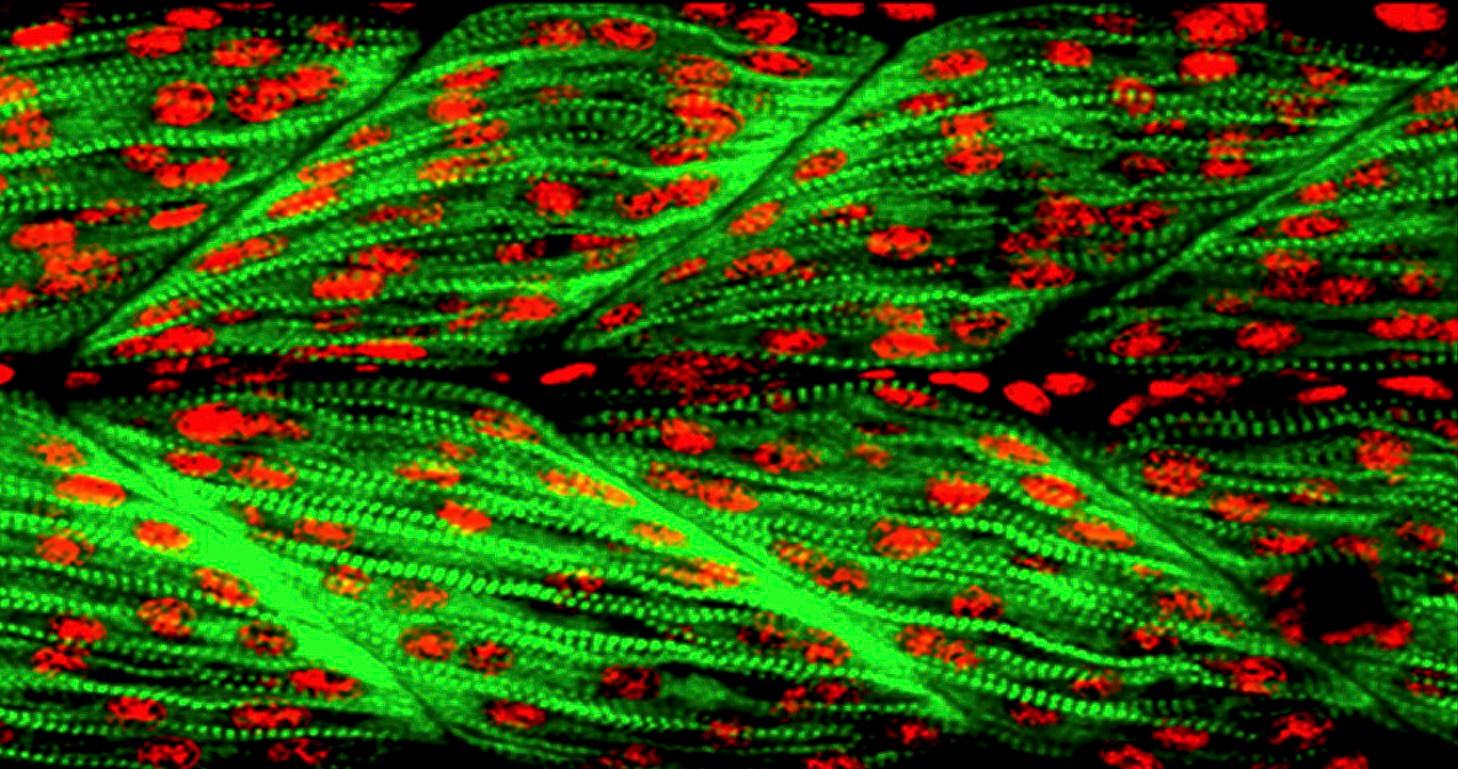- Zebrafish embryos with green fluorescent myotomes Credit: S. Roy & S Higashijima
- Fast muscle fibres in zebrafish myotomes Credit: S. Roy & C. Wolff
Zebrafish models of centronuclear myopathies
Centronuclear myopathies (CNM) are the third most common type of congenital myopathies. They are characterized histologically by an increased number of centrally localized nuclei in atrophic muscle fibers. CNM can be caused by mutations in several genes: autosomal dominant mutations in the DNM2 gene coding for dynamin 2, autosomal recessive mutations in the BIN1 gene coding for amphiphysin 2 and X-linked recessive mutations in the MTM1 gene coding for myotubularin causing X-linked centronuclear myopathy.
The project aims at understanding the molecular interactions between myotubularin, amphiphysin and dynamin that are implicated in the physiopathology of centronuclear myopathies and myotonic dystrophies. These proteins are implicated in membrane trafficking and T-tubule biogenesis. Dynamin 2 levels are increased in patients with myotubular myopathy and downregulation of dynamin 2 in MTM1 KO mouse alleviates the phenotype.
- WT embryo
- mtm1 KO. Fin fold degeneration
Zebrafish larvae is a highly efficient tool to model muscle diseases. With the availability of large clutches size, the model allows efficient chemical screens by simply adding drugs to the water. Zebrafish could therefore be an excellent model to test the efficacy of different concentrations of dynamin 2 inhibitors.
Our second aim is to Identify the genetic causes of congenital myopathies in patients without mutations in known candidate genes. Through collaborations with several neuromuscular reference centers in Belgium, we are using an integrated approach combining a comprehensive phenotypic analysis, exome sequencing and zebrafish knock-outs to characterize in vivo new genetic variants with zebrafish lines created “à la carte”.












